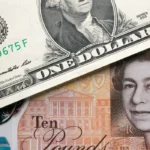The euro advanced to the strongest level in almost three weeks against the US dollar, after upbeat German and euro zone preliminary GDP data added to signs the economy of the 18-nation common currency area is gaining momentum.
EUR/USD touched a session high at 1.3715 at 12:03 GMT, after which consolidation followed at 1.3712, adding 0.23% for the day. Support was likely to be received at February 13th low, 1.3585, while resistance was to be met at January 27th high, 1.3717.
The euro was supported as preliminary data revealed the GDP in the largest euro zone economy, Germany, and in the 18-nation common currency area, expanded in the fourth quarter more than analysts predicted.
The German Federal Statistical Office, Destatis, reported today that the nations preliminary gross domestic product rose by 0.4% in Q4, outstripping analysts estimates of a 0.3% increase. Germany, which is the largest euro zone economy, expanded 0.3% in the three months to September.
A separate report by Eurostat, revealed the preliminary gross domestic product of the 18-nation common currency area grew 0.3% in the fourth quarter, compared to the previous quarter, exceeding analysts forecasts for a 0.2% increase. The euro zone economy expanded by 0.1% in the three months through September.
On annual basis, the euro zone economy expanded by 0.5% in the fourth quarter, beating analysts projections of a 0.4% increase and after a 0.3% drop in the previous quarter.
In its monthly bulletin released yesterday, the ECB firmly assured that interest rates will be kept at present or even lower levels for a prolonged period of time. The monthly bulletin came in consonance with the main policy statement taken by the central bank President Mario Draghi last week. Mario Draghi left policy on hold, with the benchmark interest rate unchanged at a record low 0.25%.
“The Governing Council firmly reiterates its forward guidance,” the ECB said today, cited by Thomson Reuters. “It continues to expect the key ECB interest rates to remain at present or lower levels for an extended period of time.”
The central bank policy members also said that they expect global inflation to be subdued in the next few months, but also reiterated that the inflation in the euro area is projected to gradually increase towards ECB’s target of just below 2%.
Meanwhile, greenback’s demand continued to be pressured after two downbeat US reports added to signs of uneven economic recovery.
The US Department of Labor reported yesterday that the number of people who filed for unemployment benefits for the first time unexpectedly increased to 339 000 in the week ended February 8, while analysts projected the number of initial jobless claims will decline to 330 000 from 331 000 in the previous week.
A separate report by the US Census Bureau, revealed the nation’s retail sales dropped by 0.4% in January, the most since June 2012 and after a downward revised 0.1% decrease in the previous month. Analysts had expected the retail sales index to remain flat in January. Retail sales are closely watched, because they provide crucial information regarding the tendency in consumer spending in the United States, which, on the other hand, accounts for about 70% of nation’s Gross Domestic Product.
Janet Yellen’s second day of testimony to the Senate Banking Committee, was postponed due to a snowstorm that tracks across the US East Coast. The hearing was scheduled to be held at 15:30 GMT yesterday.
Federal Reserve President for St. Louis James Bullard said on Wednesday that policy makers will be cautious, when deciding to change the pace of their cuts to to bond buying, because this can have potentially significant impact on markets.
Janet Yellen, in her first testimony to Congress as head of the Fed, said on February 11, the central bank will “likely reduce the pace of asset purchases in further measured steps at future meetings”, if the labor market continues to recover and inflation rises.
Yellen underscored “continuity” in the Federal reserve monetary policy, emphasizing that she strongly approves the approach of her predecessor, Ben Bernanke.
The Fed Chairman also reiterated that the pace of cutting back Fed stimulus was not on a “preset course”.
Fed policymakers are to hold their next meeting on March 18th-19th and will probably continue to pare stimulus by $10 billion at each policy meeting before exiting the program in December, according to a Bloomberg News survey of 41 economists, conducted on January 10th.
Elsewhere, GBP/USD hit a 33-month high at 1.6715 at 08:35 GMT, after which consolidation followed at 1.6708, adding 0.3% for the day. Support was likely to be received at February 13th low, 1.6600, while resistance was to be encountered at May 2nd 2011 high, 1.6739.





